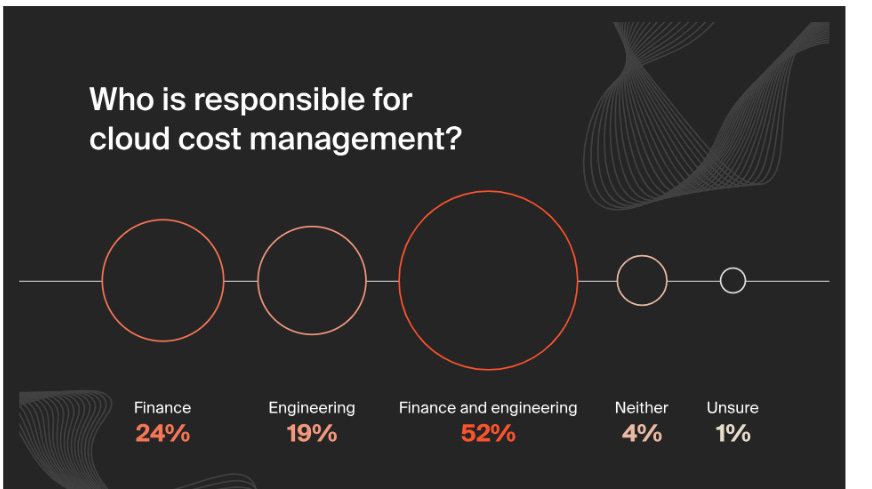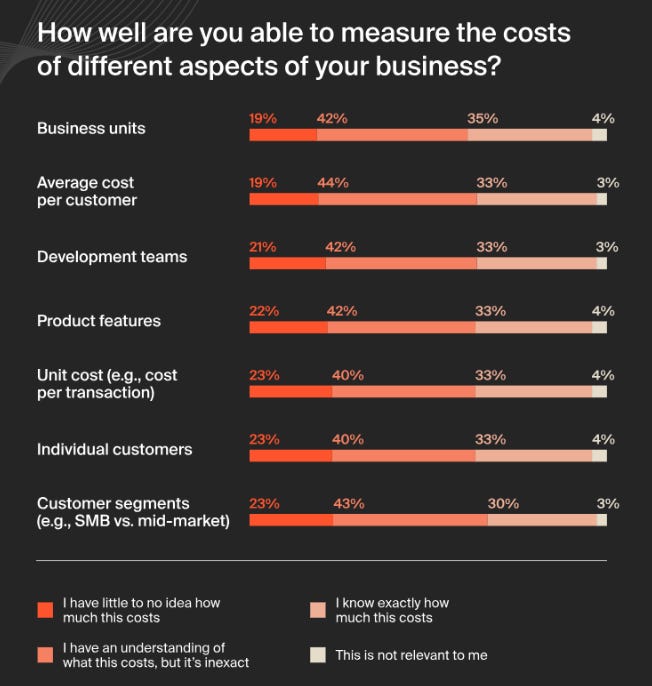Just because you’ve hired a FinOps lead or built a dashboard doesn’t mean cost management is working.
In our work with product-driven teams, we’ve seen the same patterns repeat across industries, cloud providers, and team sizes. Too often, FinOps becomes a reporting layer – something done to teams, rather than with them.
When that happens, organizations are left wondering, “why are our cloud costs still rising?”
The answer could be one or more of these reasons.
1. You’re underestimating the cost of engineering time
Before I get into consumption and licensing based cloud costs, I want to talk about an expense that your cloud bills aren’t even considering.
Yes, every team should do regular cost reviews on infrastructure usage – compute, storage, bandwidth, etc.
But what about the precious time that your engineers are spending every week manually investigating anomalies and deciphering broken tags?
Engineering time is the new cloud cost.
Two-thirds of companies report that investigating rising cloud costs disrupts engineering workflows. Many said they cause high levels of disruption, sometimes the equivalent of a full sprint!
The problem:
The hours wasted by engineers on investigating cloud spend doesn’t show up on the cloud bill but it’s a very real cost – a cost still associated with cloud usage. One senior engineer spending 6 hours a week on cloud-related ops costs you more than many auto-scaled services.
The impact:
You’re reducing team velocity without realizing it. Even worse, high performers get pulled away from strategic work to clean up usage messes.
The shift:
Treat engineering attention as a cloud asset. Automate cost reporting into engineering tools. Make reducing cost-related toil part of your FinOps metrics.
2. You’re solving cloud costs after they become a problem
The average company doesn’t plan for cloud spend, they react to it. And that delay turns small inefficiencies into systemic overspend.
You’re likely seeing this if:
- Cost reviews happen after features ship
- Architecture choices are made without pricing in mind
- Discounts and commitments (like RIs or Savings Plans) are applied to patch short-term overages
The problem:
Your cloud cost workflows begin after an incident: a budget overshoot, a surprise invoice, an executive escalation. By then, the system has already calcified. You’re solving a cost crisis that could’ve been designed out of the architecture months earlier.
The impact:
You burn cycles on retroactive cost cuts – cutting environments, chasing down old services – while the root cause remains.
The shift:

Elite and high maturity DevOps teams are considering costs more often than medium and low maturity teams, throughout the planning, analysis, and design phases. They are shifting cloud costs left in the development cycle, treating it like a non-functional requirement. I don’t see a reason why smaller companies shouldn’t start doing that.
Stay updated with Simform’s weekly insights.
3. Your teams don’t share a common cost language
How well can you attribute cloud spend to different aspects of your business? Surprisingly, two-thirds of companies can’t accurately report unit costs associated with cloud spend.

Cloud costs look like noise to most teams because they’re expressed in ways that don’t map to how your business runs. If your finance team sees dollar values and your engineers see usage metrics – and neither sees customer or product context – you’re in trouble.
The problem:
When a bill comes in high, engineering blames scale, finance blames waste, product has no clue where it came from, and nothing changes.
The impact:
Cloud costs drift across silos. There’s no accountability loop, so the same mistakes repeat quarter after quarter.
The shift:
Instead of SKUs, report on cost per product line, per customer, or per environment. When you give finance a window into usage drivers, and give engineering a sense of business context, everyone sees the same truth and better decisions follow.
4. You’ve optimized for flexibility, but not for accountability
Cloud’s biggest strength is also its biggest financial risk – the agility. We’ve seen environments scaled to 3x their intended footprint simply because no one had guardrails in place, and no one wanted to risk turning something off.
The problem:
Without boundaries, unchecked cloud usage leads to zombie workloads, idle dev environments, untagged services – with nobody knowing what can be shut off.
The impact:
Scaling without accountability creates exponential sprawl. Your infra expands faster than your product. And you can’t distinguish between growth and drift anymore.
The shift:
Every service should have a “resource owner” who governs its usage with strategic tagging and cost allocation. If your engineering teams aren’t cost context aware, start with a showback model to build awareness and then transition to chargeback as teams become more cost-conscious and processes mature.
5. You’re ignoring the software layer in your cloud costs
Today’s cloud spend includes a growing layer of software: observability platforms, security tools, managed databases, commercial AI APIs, even developer add-ons bought through cloud marketplaces.
Yet, most organizations don’t account for these in their cloud costs properly. They’re billed differently. Owned by different teams. And often missed entirely in optimization efforts.
The problem:
Software license management still sits with infrastructure or ops teams, while SAM and FinOps work in silos. So there’s no unified view of what’s being purchased, how it’s used, or what value it’s delivering.
The impact:
You end up with overlapping tools, underused licenses, and services billed monthly that no one remembers subscribing to. Worse, these costs rarely show up in FinOps reports, so they aren’t questioned.
The shift:
Pull marketplace purchases and license usage into your cloud reviews. Start with a license usage audit across your cloud stack – especially services purchased via marketplace or bundled with IaaS. Then, assign software spend ownership the same way you do for infrastructure to keep costs in check.
At the end of the day, rising cloud costs are neither a finance problem nor a tech problem. It’s an alignment problem. Between people and platforms. Between cost and value. Between intent and impact.